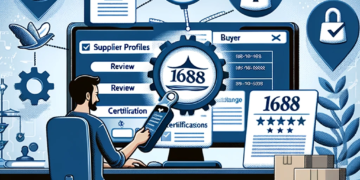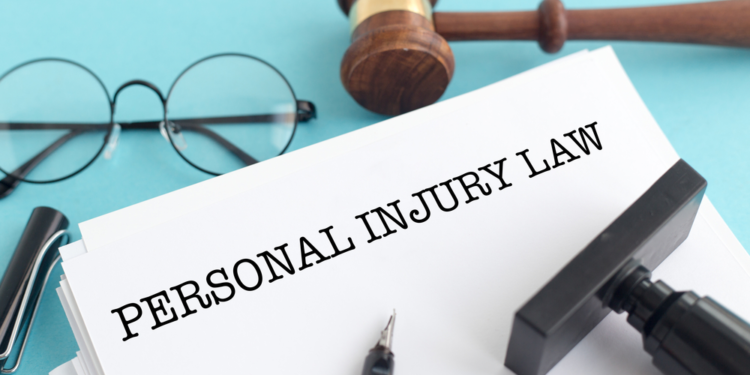Workplace injuries and personal injury lawyers can have significant impacts on employees and employers alike. Understanding the intricacies of compensation claims for workplace injuries and personal injury law is crucial for anyone navigating this challenging terrain. This comprehensive guide covers everything you need to know about compensation for personal injury claims, from the types of personal injuries being covered to the steps involved in filing a claim.
Understanding Workplace Injuries
1. What Constitutes a Workplace Injury?
A workplace injury refers to any physical or mental harm experienced by an employee during their job. These injuries can be as minor as cuts and bruises or as severe as fractures. In some cases, employees might also suffer from psychological trauma due to workplace incidents.
The range of potential injuries highlights the importance of maintaining a safe working environment. Employers must implement safety measures to prevent such occurrences and ensure the well-being of their staff.
2. Common Types of Workplace Injuries
Common workplace injuries encompass slips, trips, and falls which often result in bruises, sprains, or fractures. Repetitive strain injuries are prevalent in environments requiring continuous repetitive motions, leading to musculoskeletal conditions.
Machinery accidents can cause severe physical harm, necessitating strict adherence to safety protocols. Exposure to harmful substances poses long-term health risks, including respiratory issues and chemical burns. Awareness and understanding of these injury types are crucial for effective prevention and ensuring workplace safety.
Legal Framework for Compensation Claims
3. Workers’ Compensation Laws
Workers’ compensation laws vary by jurisdiction but generally provide a framework for employees to receive benefits if they are injured at work. These laws ensure that injured workers receive necessary medical care and financial support during their recovery.
In addition to covering medical expenses, workers’ compensation may also provide wage replacement benefits for the period the employee cannot work. Employers are typically required to carry workers’ compensation insurance to meet these obligations. Understanding your area’s specific and claim compensation laws and regulations is crucial for employers and employees to ensure compliance and proper make workers compensation claims.
4. Employer’s Liability
Employers are typically required to carry workers’ compensation insurance as a legal mandate. This insurance is specifically designed to cover the medical costs and disability benefits associated with workplace injuries. It ensures that employees receive necessary medical care and financial support during their recovery process.
By maintaining this insurance, employers are also protected from potentially significant public liability, financial liabilities and lawsuits arising from workplace incidents. Overall, workers’ compensation insurance serves as a crucial safety net, against public and personal injury lawyers, liability claims and public liability, providing peace of mind and security for both employees and employers. It fosters a safer working environment and encourages prompt reporting and treatment of injuries. Additionally, it is more compensation and helps maintain a healthy employer-employee relationship by mitigating conflicts related to injury compensation.
Filing a Compensation Claim
5. Reporting the Injury
The initial step in filing a compensation claim is to report the personal injury claim to your employer immediately. Timely reporting is crucial as it initiates the compensation process. This promptly alerts your employer to the incident, ensuring that your personal injury case is officially documented. Proper documentation is essential as it substantiates your personal injury compensation claim. Failure to report the personal injury law firm promptly can delay your compensation. Furthermore, missing this step can jeopardize your eligibility for compensation. Ensuring that your employer is informed right away helps streamline the process and avoids potential complications.
6. Seeking Medical Attention
After reporting the injury to your employer, seek medical attention immediately to ensure your health and safety. This step is crucial for starting the necessary treatment and mitigating any further complications. Detailed medical records will be vital in supporting your compensation claim by providing evidence of the injury’s severity.
Proper documentation of your medical visits confirms the extent and impact of your injury, which is essential for the claims process. Ensure to follow all prescribed treatments and attend follow-up appointments to maintain a detailed record. Timely and consistent medical documentation can significantly strengthen your claim. Lastly, keep copies of all medical records and related documentation for your personal files.
7. Documenting the Incident
Thorough documentation of the incident is crucial. Be sure to take clear photographs of the injury, note the exact time and place of the accident, and gather statements from any witnesses. Photographs should capture the extent of the injury and any related environmental factors. Accurately noting the time and place of the incident provides critical context for your claim.
Gathering statements from witnesses can corroborate your account of the car accident and provide additional perspectives. These steps will substantiate your claim and provide a solid foundation of evidence. Accurate documentation can significantly influence the outcome of your compensation case.
8. Filling Out the Claim Form
Complete the workers’ compensation claim form provided by your employer or the insurance company with great attention to detail. Ensure to provide an accurate and thorough description of the injury and the circumstances under which it occurred. This level of detail is crucial as it helps establish the legitimacy of your claim. Including comprehensive information about the incident can significantly increase the chances of a favorable outcome.
Detailed documentation ensures that all aspects of the personal injury law are clearly understood and properly recorded in most personal injury compensation claims made dedicated personal injury lawyers. Be meticulous in filling out each section of the form to avoid omissions or errors. Accurate and thorough information will support your own injury lawyer claim and facilitate a smoother compensation process.
9. Submitting the Claim
Once you have completed the workers’ compensation claim form, submit it to your employer or directly to the workers’ compensation insurance company. Ensure that you keep a copy of the completed form for your records. This copy serves as vital proof of your submission. Retaining all documentation is crucial as it safeguards your claim’s validity in case of any disputes or additional inquiries.
Proper record-keeping helps streamline the compensation process and provide clarity if details public liability claim are questioned later. Having a backup of the submitted materials ensures you have evidence to support your claim. Meticulous documentation can protect your rights against legal fees and facilitate a smoother resolution of your case.
Types of Compensation Benefits
10. Medical Benefits
Medical benefits cover the expenses for necessary treatments arising from workplace injuries. This includes consultations with doctors and hospital admissions. Essential medications required for the treatment are also covered under these benefits. Rehabilitation therapies necessary for the worker’s recovery are included as well.
Ensuring access to comprehensive medical care is vital for the injured worker’s recovery and long-term well-being. Receiving timely and appropriate treatment facilitates a smoother and quicker return to work. Comprehensive medical benefits help ensure that employees regain their health and contribute effectively to the workplace.
11. Temporary Disability Benefits
Temporary disability benefits provide essential financial support when you are unable to work due to a workplace injury. These benefits usually represent a percentage of your regular wages. The purpose is to help maintain your financial stability while you recuperate. Knowing you have access to temporary disability benefits can significantly reduce the stress associated with recovery.
This financial assistance allows you to focus on healing without worrying about income loss. The support these benefits offer can aid in a quicker and more effective recovery. They ensure that while you are off the job, your financial needs are still met, contributing to a smoother return to work when fully recovered.
12. Permanent Disability Benefits
Permanent disability benefits are awarded when an injury results in a lasting impairment that affects your ability to work. These benefits can be classified as either partial or total, depending on the severity of the disability. Partial disability benefits are given if you can still perform some work duties, even with limitations.
In contrast, total disability benefits are provided when you are completely unable to engage in any form of gainful employment. The classification of these benefits is crucial as it determines the extent of financial support you will receive. Properly understanding the difference between partial and total disability benefits can help you prepare for the financial impacts of your injury. Ensuring you have comprehensive medical documentation is essential for accurately assessing and receiving the appropriate benefits.
13. Vocational Rehabilitation
Vocational rehabilitation benefits may be available if you require assistance returning to work or securing new employment due to your injury. These benefits include job training programs designed to help you acquire new skills that are tailored to your abilities post-injury. Career counseling is also provided to guide you through the process of exploring new career paths or adapting to changes in your previous role.
The objective of these services is to ensure you are prepared and confident when re-entering the workforce. Access to vocational rehabilitation can significantly enhance your chances of finding suitable employment that accommodates your condition. By gaining new skills and receiving more professional advice and guidance, you boost your prospects for long-term career success. Utilizing these benefits can play a crucial role in your overall recovery and future employment opportunities.
14. Death Benefits
If a workplace injury leads to the death of an employee, death benefits are provided to the dependents or beneficiaries. These benefits typically include coverage for funeral expenses, ensuring the immediate financial burden is alleviated. Additionally, they offer ongoing financial support to the dependents to help manage living expenses.
The provision of death benefits aims to support the family during a period of profound loss and financial uncertainty. Ensuring a comprehensive death benefits system can provide essential relief and stability for the deceased worker’s family. Proper implementation of these benefits is crucial in alleviating additional stress during such a difficult time. Financial assistance through death benefits helps families focus on healing without the immediate worry of financial hardship.
Challenges in the Compensation Process
15. Denial of Claims
Claims can be denied for various reasons, such as insufficient evidence, missed deadlines, or disputes over whether the injury is work-related. It’s important to understand these reasons for denial to address them effectively. Knowing the specific cause of a denial enables you to gather the necessary documentation. This could involve collecting additional evidence to substantiate your claim.
Meeting required timelines is also crucial to prevent denial based on missed deadlines. Providing proof of the time limits the work-related nature of your personal injury medical negligence claim can help resolve disputes. By comprehending the basis for a denial, you can take the appropriate measures to strengthen your personal injury claim further.
16. Appeals Process
If your claim is denied, you have the right to appeal the decision. The appeals process involves gathering and presenting additional evidence to support your case. You may need to attend a hearing where you can further explain and argue your position. Understanding the appeals process and being well-prepared can significantly increase your chances of a successful outcome.
It’s crucial to compile all relevant documentation and evidence to reinforce your case. Consulting with a legal professional specialist personal injury lawyers can provide guidance and enhance your, no win an appeal. Thorough preparation and a clear understanding of the appeals process can make a significant difference in achieving the best outcome and a favorable resolution personal injury case.
17. Dealing with Insurance Companies
Insurance companies may attempt to minimize the payout or deny claims. Understanding how to effectively communicate with insurers can significantly impact your claim’s outcome. It is crucial to provide detailed and accurate documentation to substantiate your case. Additionally, developing strong negotiation skills can enhance your ability to secure a fair settlement with relevant insurer.
Legal Assistance and Representation
18. Hiring a Workers’ Compensation Attorney
Hiring a workers’ compensation attorney or a specialist personal injury lawyer can be highly advantageous, particularly if your claim is intricate or has been denied. An experienced, right lawyer or attorney specialist personal injury lawyer, can navigate the legal complexities and ensure your rights are protected throughout the process. They can advocate on your behalf, arguing your case effectively and gathering the necessary evidence to support your claim. Ultimately, having legal representation can significantly enhance your chances of a favorable outcome and provide peace of mind during a challenging time.
19. Understanding Attorney Fees
Workers’ compensation attorneys play a critical role in handling complex or denied claims, seek legal advice, using legal advice and ensuring that your rights are safeguarded throughout the process. By using legal advice, effectively using legal advice, gathering essential evidence and a dedicated team of advocating on your behalf, they significantly improve your chances of a favorable outcome.
Employee Rights and Responsibilities
20. Rights of Injured Workers
Injured workers are entitled to medical treatment, compensation for lost wages, and protection from retaliation when filing a claim. Being aware of these rights ensures you can advocate and claim compensation for your injury yourself effectively.
21. Responsibilities of Injured Workers
Injured workers must report the work injury, promptly, attend medical appointments, and follow treatment plans. These responsibilities are crucial for a successful claim.
Employer Obligations
22. Employer’s Role in the Claims Process
Employers must furnish the necessary forms, report the personal injury compensation lawyers and medical negligence to the workers’ compensation insurance company, and cooperate in the personal injury lawyer and medical professional and injury compensation claims process. Understanding the employer and law firm’s responsibilities ensures that they comply with legal requirements and support injured workers effectively.
23. Providing a Safe Work Environment
Employers are obligated to ensure a safe work environment by adhering to safety regulations and providing proper training and equipment. By doing so, they actively work to prevent workplace injuries and protect their employees’ well-being.
Preventing Workplace Injuries
24. Implementing Safety Programs
Implementing safety programs and regular training is essential for significantly reducing the risk of workplace injuries. These initiatives should be tailored to address the specific hazards present in a given workplace environment. By doing so, employers ensure that employees are well-informed and equipped to handle potential risks effectively.
25. Employee Training and Education
Implementing safety programs and regular training is essential for significantly reducing the risk of workplace injuries. These initiatives should be tailored to address the specific hazards present in a given workplace environment. By doing so, employers ensure that employees are well-informed and equipped to handle potential risks effectively.
26. Regular Safety Audits
Conducting regular safety audits and inspections helps identify potential hazards and address them before accidents occur. These audits should be thorough and include employee participation to ensure all workplace risks are assessed. By involving employees, the process benefits from their firsthand experience and knowledge of daily operations.
Conclusion
Workplace injuries are an unfortunate reality, but understanding compensation claims and the process involved is crucial for injured workers’ recovery and peace of mind. Knowing your rights, such as receiving medical treatment and compensation for lost wages, ensures you are adequately protected.
You can strengthen your claim by fulfilling responsibilities like promptly reporting injuries and complying with treatment plans. Employers play a significant role by maintaining a safe work environment and supporting employees through the claims process. Collaboration between workers and employers helps create a safer, more supportive workplace for everyone.











































































